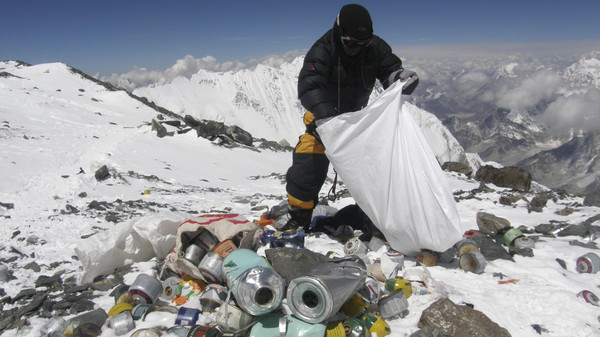
26,000 pounds is the total amount of untreated human waste accumulated from climbers and their support members at Mount Everest Base Camp last year.
Normally, human waste management is an avoidable necessity but for the highest mountain in the world, it is a huge challenge.
“Doing the business” in the highest summit in the world means simply digging a hole in the ground. At the Everest Base Camp, climbers go to the bathroom in large blue barrels with toilet seats. These barrels are hauled by porters to the village of Gorak Shep and dumped into unlined pits.
The waste takes years to decompose because of the cold temperature and contaminates the water sources in the villages below the camp. To address this problem, Mount Everest Biogas Project founded by Garry Porter and Dan Mazur, started on an unprecedented biogas system in 2010.
The project aims to deploy a visionary solar-powered biogas system capable of operating at extreme high-altitude environmental conditions, eliminating the hazardous dumping of untreated human waste.
The team has come up with a final design for the project. The system has a buried container heated by solar panels. A battery stores the energy from the solar panels to keep it running at night, while an insulated shed protects everything from the elements.
The setup provides three benefits: recycling of human waste, long-term employment for locals, and methane gas for to be used for cooking and fertilizing. The project members are now working to begin construction of a prototype of the final design. Hopefully, we will have a much needed poop-to-gas system soon.
For more information, visit Mount Everest Biogas Project.
-
Bajaj Pulsar NS 160 Price in Nepal (July 2025 Updated)HIGHLIGHTS Bajaj Pulsar NS 160 BS6 price in Nepal is Rs. 3.93 Lakhs. Pulsar NS…
-
EXCLUSIVE: Galaxy Buds Core is Here in Nepal – Samsung’s Cheapest TWS with ANCHIGHLIGHTS Samsung Galaxy Buds Core price in Nepal is Rs. 7,399. The earbuds feature a…
-
Honor X6c with 120Hz Refresh Rate and IP64 Rating Launching in Nepal SoonHIGHLIGHTS The Honor X6c price in Nepal could be Rs. 20,999 (6/128GB), Rs. 22,999 (6/256GB),…












